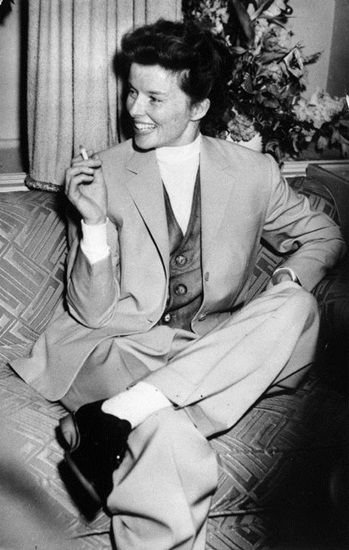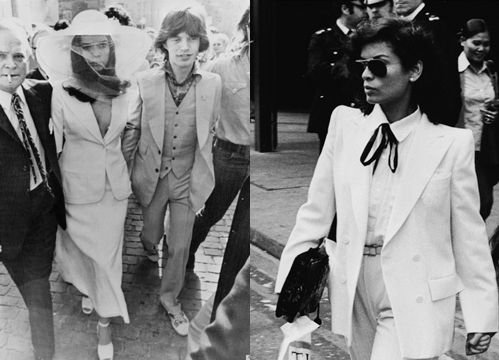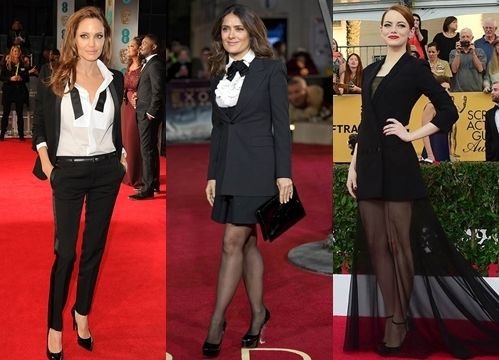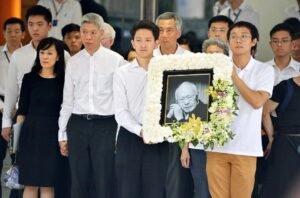
Menswear - classy style of all time 3
Menswear is a way to transform items that are only for men into harmony, elegance and personality with women’s bodies.
In the past few years, menswear has crept into the outfit combinations of many collections and shows.
Origin of menswear
Katharine Hepburn is powerful in a suit with gilet and leather shoes.
As a pioneer in women’s menswear in the 1930s, legendary French designer Coco Chanel and later Yves Saint Laurent all had the same mindset when it came to proving to the world that women
Coco Chanel started the menswear trend by promoting the trend of pants and jersey shirts – previously clothes exclusively for men.
During that period, Marlene Dietrich and Katharine Hepburn were two representative figures of menswear fashion.
By the early 1960s, pants made of provocative materials and pastel tones became a fashionable choice for ladies.
Not only are each line delicate, the shirt models exude the hidden strength of women.

Bianca Jagger deserves to be a menswear fashion icon.
Menswear flourished through the ages
During the 1970s disco era, the classic outfit included a long-sleeved shirt combined with a sleeveless vest, a men’s blazer, a polka dot tie and pleated khaki pants, reflecting the rebellious nature of women in society.
A decade later, menswear for women focuses on high-quality fabrics, with signature square shoulder pads and the indispensable, sharp charisma of a man.
Starting after the 2000s, suits were no longer sewn too rigidly like in the 1980s, nor too loose like in the 1990s. Instead, there was a compromise with a sturdy but still slim shape.

Today’s Hollywood celebrities are still charming in menswear style.
Nowadays, creative variations of menswear have become popular among Hollywood stars.
Not as shocking as the see-through or cut-out dresses, nor as noisy and bustling as the 1970s, bohemian or fringed outfits being hailed on the catwalks, menswear remains in its place:



